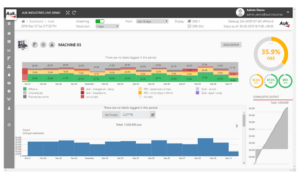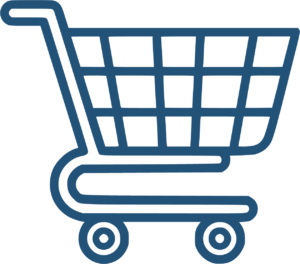
The primary business objective of any organization is to maximize profits through the efficient and optimal use of resources such as physical assets and inputs. However, some organizations lack the resources to audit their existing equipment and manpower before making significant investments in physical assets to meet their growing demands. This could result in high capital expenditure (CapEx) but low return on investment (ROI) due to overcapacity and underutilization of equipment on the production floor. In other words, you may have made a costly mistake.
Fortunately, there is a better way to decide when, what and what investments to make. Overall equipment effectiveness (OEE) is used by manufacturers around the world to answer questions such as:
- How efficient are your production line and equipment?
- How does machine downtime affect your productivity?
- What other factors affect your productivity
- How can you better allocate resources
In our experience, here are three practical ways in which OEE can maximize the earning power of your facility and generate positive financial impacts for you.
1. Achieving the right ROI on your equipment
Faced with increasing customer demand, companies may be tempted to use their savings to finance new equipment and take advantage of business opportunities. This move may seem even more pertinent when existing pieces of machinery do not seem to be able to produce as fast as they should.
While new equipment can increase production speed, we realize that investing in physical assets is expensive and carries risks. Before diving headlong into new investments, it would be prudent to use OEE to find out how much unused resource is available in your factory and what is causing a delay in your production speed.
Depending on the use cases, the average OEE of production lines and machines ranges from 40 to 60%. Having a low OEE is not a serious concern if you are aware of it and actively implement changes to improve it. The danger lies when you are unaware that your machines are not producing as quickly and as efficiently as they should: an OEE score below 50% could mean that you are incurring unnecessary costs in lost production and (possibly) doubling your payback period.

As demonstrated, OEE can provide a fair comparison between your actual production and theoretical maximum production. By taking contribution margins into account, you can forecast your net profit objectively and derive ROI in the midst of other profitability metrics such as return on capital employed (ROCE). If the manufacturing plant is not achieving an ideal ROI, it would be best to allocate resources to improve the use of existing capital before making new capital investments.
After investing in new equipment, the OEE score could be used to monitor the efficiency of its operation in order to extract maximum ROI and minimize the payback period.
2. Maximising profit by closing the gap between the production floor and management
Management wants to make decisions that increase the organization’s profitability. However, the difficulty lies in obtaining the information necessary to make these decisions in an informed manner.
Profitability depends on revenues and costs. Therefore, a higher-priced product does not necessarily generate more profit because it is more expensive to manufacture. To get accurate profitability figures, the organization would have to find a way to connect the shop floor to the income statement in real time. Using the OEE score strategically can be very useful.
Imagine a situation where you are presented with the OEE score of three pieces of manufacturing equipment A, B, C, used in three different product lines. A has an OEE score of 40%, B has an OEE score of 50% and C has an OEE score of 60%. The most intuitive response would be to improve the equipment with the lowest OEE (also known as A), followed by B and then C.
However, to maximize profits, you should look for the improvement that most increases operating income (OEE). For example, improving Team A’s OEE score from 40% to 55% may generate less profit than improving Team C’s from 60% to 75%. The relationship between OEE and profit can be ascertained by entering the data collected in a
- Manufacturing Execution System (MES) or Enterprise Resource Planning (ERP) platform.
- Enterprise resource planning (ERP) platform.
Along with these resources, OEE and its wealth of real-time shop floor data add value to the decision making process of both production managers and management. OEE is also useful when you want to track improvement in equipment utilization when implementing changes on the shop floor.
3. Increasing profit by cutting cost

A higher demand for your output would undoubtedly increase revenue (units sold x selling price) and, in turn, profits. Demand, however, is an exogenous factor for profits, since you cannot control how much customers want your products. Costs, on the other hand, are an internal factor that you can control within your production plant. Lowering costs would certainly increase profits, ceteris paribus.
Cost savings can come from optimizing labor productivity. When operators are able to work more productively, fewer shifts are needed and more can be produced with less.
A customer in the food industry implemented our industrial IoT systems in their production plant and was able to consolidate OEE scores in real time, across all production lines. OEE scores and its core components of Availability, Performance and Quality are made known to all operators through a dashboard, like the one shown here.
From there, they were able to obtain information about their production peaks and downtime. With a minor reorganization of the work schedule, they were able to increase their production volume by 34% (corresponding to an increase in OEE from 55% to 75%). Production quality also improved thanks to the data collected by the sensors installed on the food production machines. As a result, wastage due to rejects was reduced.
Cost savings can also come from more efficient utilization of your assets and resources.
With OEE data, you may discover that your production plant has additional capacity (both physical and manpower) to undertake new projects or manufacture more product variants that are more profitable. This is called “uncovering your hidden factory”. Often, a low OEE score is indicative of a large “hidden factory”.
The “hidden factory” refers to idle capacity in your production facilities; the extra amount of production that can be done without additional CapEx. It is often due to
- Schedule Loss
- Availability Loss
- Performance Loss
- Quality Loss
By uncovering your hidden factory, you also stand to enjoy:
- Lower conversion costs: Your fixed cost is spread over more output
- Lower cost of inventory: With more effective run time, the lead time is reduced and inventory can be ordered on a more ‘just-in-time’ basis
- Deferred Spend: Increasing the throughput of existing equipment, increase ROI and defer spending on new machinery.
Traditionally, the production floor and management worked mostly in silos because there is a lack of resources to track the performance of their production floor and tie them in with financial performance. With real-time OEE, organisations can easily improve their production performance and improve business results, thereby achieving their profit goals more easily.
You can also join the OEE revolution and find out exactly how and where you can improve the financial performance of your manufacturing plant.
sales@logicbus.com | support@logicbus.com | +1 619 616 7350 | Start conversation





